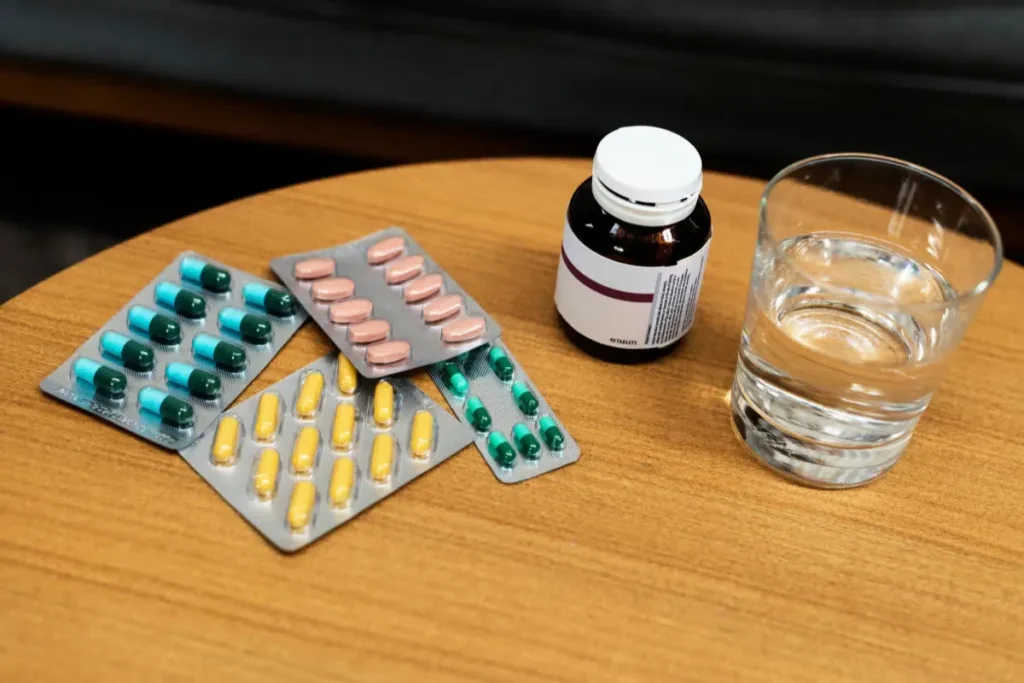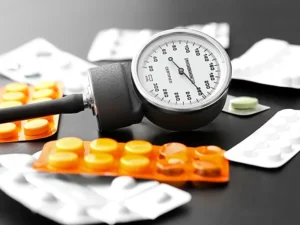GLP-1 medications like Ozempic, Wegovy, and semaglutide have transformed weight loss treatment by targeting the body’s natural appetite control mechanisms. These medications work by mimicking hormones that regulate hunger and fullness signals in the brain.
Most people taking GLP-1 medications report feeling less hungry throughout the day, experiencing earlier satiety during meals, and having reduced cravings for high-calorie foods. The appetite-suppressing effects typically begin within the first few weeks of treatment as patients adjust to their prescribed doses.
Many patients notice changes in their eating habits and relationship with food while taking these medications. The reduced drive to eat makes it easier to consume smaller portions and maintain a caloric deficit needed for sustainable weight loss. These physiological changes, combined with lifestyle modifications, help patients work toward their health goals.
Understanding GLP-1s and Their Role in Weight Management
GLP-1 medications work by mimicking natural hormones that regulate blood sugar, appetite, and digestion. These medications help people lose weight through multiple effects on metabolism and eating behavior.
What Is GLP-1 and How Does It Affect the Body?
Glucagon-like peptide-1 (GLP-1) is a hormone produced in the intestines after eating. This hormone plays a crucial role in blood sugar control and appetite regulation.
GLP-1 triggers the pancreas to release insulin when blood sugar levels rise. The hormone also reduces glucagon production, which helps prevent blood sugar spikes.
The body’s natural GLP-1 sends signals to the brain that create feelings of fullness and satisfaction. This process helps reduce food intake and calorie consumption.
GLP-1 slows down gastric emptying, which means food stays in the stomach longer. This delayed emptying leads to extended feelings of fullness between meals.
GLP-1 Medications and Their Mechanisms of Action
GLP-1 medications are synthetic versions of the natural hormone that stay active in the body much longer. These drugs work by binding to specific receptors throughout the body.
The medications reduce appetite through direct effects on brain centers that control hunger. They also increase feelings of satiety during and after meals.
These drugs help lower blood pressure and improve blood sugar control in people with type 2 diabetes. The combination of appetite suppression and metabolic effects makes them effective for obesity treatment.
Common GLP-1 medications include semaglutide, liraglutide, and dulaglutide. Each medication has specific dosing schedules and administration methods.
The Experience of Weight Loss on GLP-1 Medications
GLP-1 medications create distinct physical and mental changes as patients progress through their weight loss journey. These medications affect appetite, eating behaviors, and energy levels while requiring consistent lifestyle adjustments.
Physical and Psychological Aspects of Weight Loss
Many patients report a significant reduction in food cravings within the first few weeks of starting GLP-1 medications like Saxenda or Rybelsus. The medications help control the constant thoughts about food that often derail weight loss efforts.
Nausea is a common initial side effect that typically improves after 2-4 weeks of treatment. Patients should start with lower doses and gradually increase them as tolerated.
Physical energy levels often improve as weight decreases. Many patients find it easier to engage in exercise and daily activities as their body mass index (BMI) drops.
The medications can change taste preferences and reduce interest in previously tempting foods. This shift helps patients make healthier food choices naturally.
Personal Weight Loss Journey and Realistic Expectations
Weight loss typically begins within the first month of treatment, with most patients losing 5-10% of their body weight in 3-6 months when combining medication with lifestyle changes.
Successful patients focus on sustainable habits like regular physical activity and portion control rather than quick fixes. Small, consistent changes produce better long-term results.
Progress varies between individuals based on starting weight, medication type, and adherence to lifestyle modifications. Some patients respond better to certain medications like tirzepatide or liraglutide than others.
Weight management requires ongoing commitment even after reaching goals. Many patients maintain their results by continuing medication alongside healthy habits.
Navigating Side Effects and Sustaining Long-Term Weight Loss
GLP-1 medications require careful management of side effects and consistent lifestyle changes to achieve lasting weight loss success.
Common Side Effects and Their Management
Gastrointestinal Effects:
- Nausea: Take medication with meals and stay hydrated
- Constipation: Increase fiber intake and physical activity
- Vomiting: Eat smaller portions and avoid fatty foods
These symptoms typically improve within the first few weeks of treatment. Patients should start with lower doses and gradually increase as directed by their healthcare provider.
Managing Fatigue:
- Get 7-8 hours of sleep nightly
- Schedule light exercise during peak energy times
- Stay hydrated and maintain balanced nutrition
Strategies for Maintaining Weight Loss
Regular physical activity plays a crucial role in long-term success. Aim for 150 minutes of moderate exercise weekly, divided into manageable sessions.
Essential Habits for Success:
- Track food intake using a mobile app or journal
- Plan meals in advance to avoid impulsive eating
- Schedule regular check-ups with healthcare providers
Building a support system strengthens commitment to lifestyle changes. Connect with others on similar weight loss journeys through support groups or online communities.
Sustainable Dietary Changes:
- Focus on protein-rich foods
- Include plenty of vegetables and fiber
- Practice portion control at every meal
Regular monitoring helps identify potential health improvements, including reduced risk of heart disease and better blood sugar control.
Considerations for GLP-1 Medication Treatment
Starting GLP-1 medications requires careful planning around costs, insurance coverage, and medical supervision to ensure safe and effective treatment.
Financial and Insurance Aspects
Many insurance plans now cover GLP-1 medications like Ozempic, Wegovy, and Mounjaro. Coverage varies significantly between providers, with some plans requiring prior authorization or step therapy.
Monthly costs without insurance can range from $900 to $1,500 for medications like semaglutide and dulaglutide.
Some manufacturers offer savings cards that can reduce out-of-pocket expenses by $200-500 per month for eligible patients.
Many insurance plans require documentation of BMI, previous weight loss attempts, and medical necessity before approving coverage.
Healthcare Guidance and Support Systems
Regular check-ins with healthcare providers help monitor progress and manage potential side effects. Medical teams typically schedule appointments every 4-12 weeks.
Patients often work with dietitians to develop meal plans that complement the medication’s effects.
Support groups and educational workshops provide valuable information about lifestyle changes and medication management.
Digital health platforms can help track weight changes, medication schedules, and food intake while connecting patients with their care team.
Medical practices may offer specialized programs that combine GLP-1 treatment with nutrition counseling and behavioral support.
Frequently Asked Questions
GLP-1 medications have transformed weight loss treatment by reducing appetite and slowing digestion, leading many patients to achieve significant results when combined with lifestyle changes.
What are common side effects when taking GLP-1 medications for weight loss?
Nausea is the most reported side effect, especially during the first few weeks of treatment.
Patients may experience digestive issues like vomiting, diarrhea, or constipation as their bodies adjust to the medication.
Some people report headaches, dizziness, or fatigue during the initial adjustment period.
How quickly can one expect to see weight loss results with GLP-1 medications?
Most patients notice reduced appetite within the first week of starting treatment.
Initial weight loss typically begins within 2-4 weeks of starting the medication at the proper dose.
Studies show patients lose an average of 5-10% of their body weight within 3-6 months of consistent use.
Which GLP-1 medication is most effective for weight loss in non-diabetics?
Semaglutide (Wegovy) has shown the highest average weight loss in clinical trials for non-diabetic patients.
Studies demonstrate that patients taking Wegovy lost an average of 15% of their body weight over 68 weeks.
Tirzepatide has also shown promising results in recent trials, with some patients losing up to 20% of their body weight.
Are there long-term side effects associated with the use of GLP-1 medications?
Research indicates potential risks of pancreatitis and gallbladder disease in some patients.
Regular monitoring by healthcare providers helps identify and prevent serious complications.
Thyroid cancer risk remains under study, though current data shows minimal risk in humans.
What is the typical dosage of GLP-1 medication recommended for losing weight?
Doctors typically start patients on a low dose and gradually increase it over several weeks.
The target dose varies by medication – Wegovy reaches 2.4mg weekly, while Saxenda peaks at 3.0mg daily.
Dose adjustments depend on individual tolerance and response to treatment.
How can someone tell if their GLP-1 medication is working effectively?
Regular weight measurements should show steady losses of 0.5-2 pounds per week.
Patients typically notice reduced hunger, smaller portion sizes, and less interest in food.
Blood sugar readings and lab work help healthcare providers track metabolic improvements.







